Blue Widow
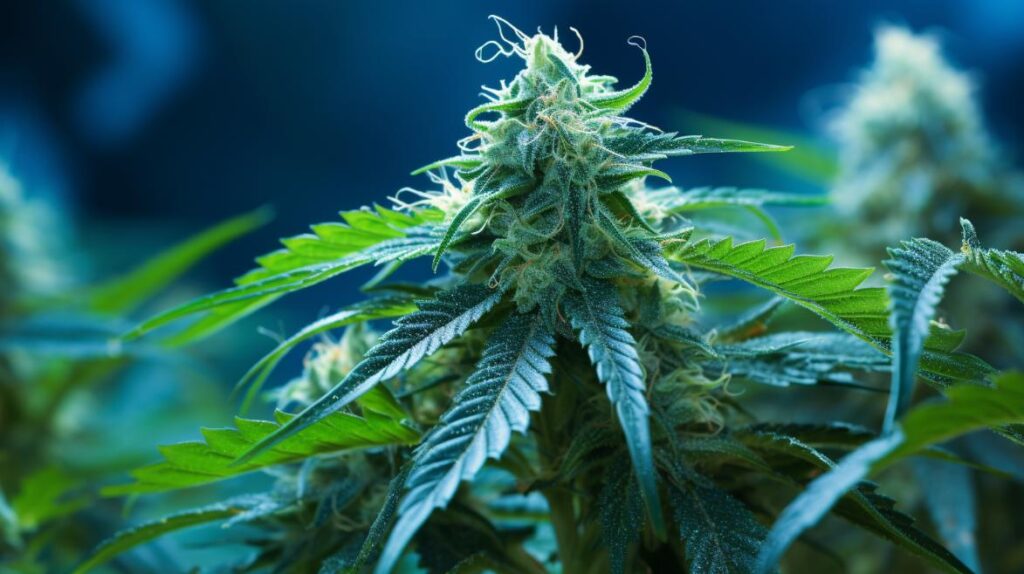
The Blue Widow strain, a remarkable indica-dominant hybrid that emerges from the crossbreeding of the White Widow and Blueberry strains, has garnered attention within the cannabis community for its balanced THC content, ranging from 12% to 16%, and its moderate CBD levels.
This strain is distinguished not only by its potent therapeutic effects, which provide relief from pain, stress, anxiety, and muscle tension, but also by its unique flavor profile that combines the sweetness of blueberries with subtle earthy undertones.
As we explore the genetic lineage, terpene profile, and the specific effects of the Blue Widow strain, it becomes apparent that understanding its complexity could offer valuable insights into its growing popularity and medical uses. However, to fully appreciate the nuances of this strain, one must also consider the potential adverse effects and how it compares to other strains with similar characteristics.
Join us as we unveil the layers behind the Blue Widow strain, shedding light on its history, origin, and the research that underscores its medicinal value.
Genetic Lineage
The genetic lineage of Blue Widow, a meticulously crafted indica-dominant hybrid, originates from the crossbreeding of the renowned White Widow and Blueberry strains, embodying a genetic composition of 60% sativa and 40% indica. This hybrid strain showcases an intricate balance between the cerebral invigoration of its sativa heritage and the soothing physical relaxation characteristic of indica varieties.
The fusion of Blueberry and White Widow genetics imparts a unique profile to Blue Widow, blending the euphoric and resinous qualities of White Widow with the fruity and tranquil essence of Blueberry. This genetic blend not only contributes to the strain’s multifaceted therapeutic applications—ranging from muscle tension relief to mitigating nausea—but also influences its agronomic traits.
Blue Widow exhibits a compact plant morphology, characterized by dense, resinous buds that are visually striking with their blue-tinged appearance and vibrant orange pistils. The strain’s genetic structure has been fine-tuned to produce a moderate THC content of 12% to 16%, paired with a medium CBD level, creating an energizing yet manageable effect profile that is less intense than some of its higher THC counterparts.
Through this precise genetic synthesis, Blue Widow emerges as a hybrid strain distinguished by its balanced effects, flavorful terpene profile, and versatile therapeutic utility.
THC/CBD Content
Boasting a medium THC level that ranges from 12% to 16%, Blue Widow offers users a balanced psychoactive experience, complemented by a moderate CBD content that underscores its therapeutic potential. This particular cannabinoid profile facilitates an equilibrium between euphoria and relaxation, making it an attractive choice for those seeking relief without the overwhelming intensity often associated with high THC content strains.
The presence of CBD adds to the strain’s appeal by potentially mitigating some of the adverse effects typically attributed to THC, such as anxiety or paranoia, while enhancing its analgesic and anti-inflammatory properties.
The nuanced interplay between THC and CBD in Blue Widow supports a multifaceted therapeutic application. It is especially pertinent for individuals dealing with stress, chronic pain, and insomnia, offering a holistic approach to symptom management.
However, users are advised to remain cognizant of the possible side effects, including dry mouth, dry eyes, and dizziness, which are common amongst cannabis strains. For optimal results and a tailored experience, consulting with a cannabis counselor can provide invaluable guidance on dosing and usage, ensuring that the strain’s potential is fully realized in a safe and effective manner.
Terpene Profile
Understanding the THC/CBD content is crucial; equally important is the terpene profile of Blue Widow, which includes myrcene, pinene, and limonene, shaping its aromatic and flavor characteristics. These terpenes contribute to the strain’s complex aroma and flavor profile, blending bitter, hash, diesel, sour, spicy, and sweet flavors with distinct blueberry and earthy notes. The presence of limonene, in particular, enriches the sour citrus taste of this strain, making it a unique experience for consumers.
-
Myrcene: Offers a herbal and earthy undertone, enhancing the calming and relaxing effects. It’s pivotal in the strain’s ability to alleviate chronic pain and manage insomnia.
-
Pinene: Contributes to the strain’s sharp, piney aroma. Pinene is known for its anti-inflammatory properties and its ability to aid in memory retention, making Blue Widow a potentially beneficial choice for those managing stress.
-
Limonene: Adds a bright, sour citrus note to the taste of this strain, uplifting the mood and potentially aiding in depression relief due to its stress-relieving qualities.
The terpene profile of Blue Widow not only defines its unique sensory experience but also underpins its therapeutic potential, offering a multifaceted approach to cannabis consumption and medical application.
Effects
Delving into the effects of Blue Widow, users experience a multifaceted high that marries a clear, uplifting cerebral rush with a soothing, relaxing body sensation. This hybrid strain adeptly balances the energizing head high with a tranquil physical state, illustrating its duality and versatility. The cerebral effects can border on psychedelic, enhancing creativity and prompting a thought-provoking head high that might slightly increase alertness. Such a head high is conducive to activities requiring a blend of concentration and creativity.
Furthermore, Blue Widow’s pain-relieving properties underscore its therapeutic potential. It is particularly efficacious in alleviating symptoms of stress, anxiety, and insomnia, due to its calming effects.
The strain’s unique terpene profile contributes to a complex tasting experience, with a palate ranging from spicy and sour to sweet, highlighted by distinct blueberry flavor notes. This rich flavor profile complements the strain’s potent and lingering aroma, a pleasant mix of berries, pine, and subtle citrus hints, enhancing the overall consumption experience.
Medical Uses
Exploring the multifaceted effects of Blue Widow, it becomes evident that its therapeutic benefits extend significantly into the realm of medical uses, particularly in pain management and mood regulation. Blue Widow Marijuana stands out in the medical cannabis community for its potent efficacy in addressing a range of conditions. Its balanced blend of sativa and indica traits makes it a versatile choice for patients seeking relief from various symptoms without heavily sedating effects.
-
Pain and Stress Relief: Blue Widow is highly effective in mitigating chronic pain and stress, offering a soothing respite for those afflicted by conditions that impair daily functioning. Its analgesic properties are complemented by its ability to promote mental relaxation, making it a dual-action strain for comprehensive symptom management.
-
Sleep and Mood Disorders: The strain aids significantly in managing insomnia and enhancing mood, thanks to its relaxing effects and potential to induce a cerebral high. This makes it a valuable option for individuals battling with sleep disturbances and mood swings.
-
Nausea and Muscle Tension: Blue Widow provides relief from nausea, particularly that associated with chemotherapy, and assists in muscle relaxation. Its antiemetic and muscle-relaxant properties are crucial for patients seeking a natural alternative to pharmaceutical interventions.
Flavor and Aroma
Transitioning from its medical applications, the Blue Widow strain also distinguishes itself through a unique flavor and aroma profile that marries sweet, fruity accents with earthy, spicy nuances. The Blue Widow strain, a harmonious blend of Blueberry and White Widow, showcases a complex sensory experience defined by its multifaceted flavor and aroma.
| Aspect | Description | Notes |
|---|---|---|
| Flavor | Berries and pine, sweet-hashy with berry hint | Sweet, Fruity, Earthy |
| Aroma | Pungent, skunky with citrus undertones | Skunky, Citrusy |
| Taste | Mix of bitter, hash, and diesel | Diverse, Unique |
| Aftertaste | Sour, spicy, and sweet | Complex, Engaging |
| Scent | Pleasant, lingering | Distinct, Unique |
This detailed table encapsulates the essence of the Blue Widow strain’s flavor and aroma, emphasizing its diverse tasting experience. From the initial sweet and fruity notes to the lingering complex aftertaste, Blue Widow offers a deeply satisfying olfactory and gustatory journey. Its aroma, marked by a skunky punch with citrus undertones, adds to the allure, making it a standout choice for those seeking a flavorful and aromatic cannabis strain.
Appearance
Moving beyond its captivating flavor and aroma, the Blue Widow strain also boasts a visually striking appearance, characterized by its dense, bushy growth and unique coloration. This cannabis variety exhibits a robust structure, with a compact and bushy silhouette that hints at its indica dominant traits. The plant demonstrates a meticulous balance in its physical form, showing a uniform height, nodes, and density that contribute to its aesthetic appeal.
Key visual aspects of the Blue Widow strain include:
-
Dense, solid buds: These are heavily adorned with shiny glands, making the buds not only a visual treat but also a testament to the strain’s potency.
-
Distinct blue hue: The buds are enveloped in this captivating color, which contrasts beautifully with the vibrant orange hairs, a characteristic that adds depth to its visual allure. This combination of colors is reminiscent of another popular strain, Blue Venom, known for its visually appealing buds.
-
Broad, dark green leaves: These leaves, with a high calyx to leaf ratio, further accentuate the dense bud structure, creating a striking visual contrast that makes the Blue Widow strain a standout in any garden or collection.
This detailed combination of colors, structures, and textures ensures that Blue Widow is as much a feast for the eyes as it is for the senses.
Grow Information
Delving into the cultivation aspects, Blue Widow demonstrates remarkable versatility and resilience, thriving in both indoor and outdoor environments with specific growth characteristics that underscore its indica-dominant hybrid lineage. This strain is notably easy to grow, appealing to cultivators of various experience levels. Given its genetic heritage—bridging the robust White Widow with the flavorful Blueberry—it exhibits a growth pattern that leans towards its sativa genetics, enabling it to achieve a height of up to 120 cm indoors. Outdoors, in a more natural setting, Blue Widow can stretch even taller, reaching heights of approximately 200 cm.
The plant requires an average flowering time of about 8 weeks, a relatively quick turnaround that allows for efficient cultivation cycles. This speedy flowering period does not impede its yield; on the contrary, Blue Widow is known for its impressive indoor yields. This efficiency and productivity make it an attractive option for both novice and seasoned growers. Its easy-to-grow nature, combined with the ability to achieve significant height and yield, positions Blue Widow as a preferred choice in the cannabis cultivation community.
Adverse Effects
While Blue Widow is celebrated for its ease of cultivation and impressive yields, it is also associated with certain adverse effects that potential users should be aware of. The Blue Widow strain, like many cannabis varieties, can induce a range of effects, both positive and negative. Understanding these adverse reactions is crucial for users to manage and possibly mitigate them.
The adverse effects commonly reported include:
- Dry mouth and dry eyes, which are frequent among various cannabis strains. These conditions are relatively minor and can often be managed with proper hydration and the use of eye drops.
- Dizziness, a sensation that might affect newcomers or those sensitive to THC-rich strains more prominently.
- Anxiety and paranoia, which are less common but significant concerns. These psychological effects can vary greatly among users, influenced by factors such as dosage, individual sensitivity, and the context of use.
It’s important to start with a small dose to assess individual tolerance and avoid potential adverse effects. Since reactions to the Blue Widow strain can vary, being mindful of one’s personal response is essential. Tailoring the experience to one’s comfort level can help in enjoying the benefits while minimizing the negative aspects.
Comparisons with Similar Strains
Exploring strains akin to Blue Widow, such as 10th Planet, 12 Year OG, and 24K Gold, reveals a spectrum of effects and characteristics that inform both user experience and cultivation choices. These strains, while sharing a lineage with Blue Widow, diverge in their THC and CBD content, leading to variations in potency and potential medical applications.
For example, the comparison between Blue Widow and its indica-dominant hybrid relatives, White Widow and Blueberry, highlights differences in effects and flavors, with Blue Widow offering a unique balance between relaxation and euphoria, characterized by its distinct berry and earthy notes.
Further examination of related strains, Berry White and Blue White, underscores the importance of understanding each strain’s growth patterns and cultivation requirements. Berry White, known for its stress-relieving properties, and Blue White, praised for its balanced effects, both share similarities with Blue Widow but require different cultivation techniques to achieve their optimal yield and potency.
This comparison elucidates the nuanced decisions growers and users must make when selecting a strain, taking into account not only the desired effects and flavors but also the practical aspects of cultivation and care.
Research and Studies
Having considered the comparative aspects of Blue Widow and related strains, it is now pertinent to examine the existing body of research and studies focused on its medical benefits and cultivation complexities. The Widow strain, with its unique genetic makeup, has piqued the interest of the scientific community, albeit research remains in nascent stages.
-
Limited Research on Medical Benefits: There’s a noticeable gap in comprehensive studies regarding the specific medical applications of the Blue Widow strain. Its indica-dominant traits hint at potential analgesic properties, yet detailed research to substantiate these claims is sparse.
-
Potential Therapeutic Compounds: Initial findings suggest that the terpenes myrcene, pinene, and limonene, prevalent in Blue Widow, may offer therapeutic benefits. However, further research is essential to fully understand their impact and synergy with cannabinoids.
-
Moderate CBD Content and Effects: The strain’s moderate CBD levels warrant a closer examination of its possible health implications. Current studies do not definitively establish how this cannabinoid content affects various medical conditions, underscoring the need for more targeted research.
History and Origin
The indica-dominant hybrid strain known as Blue Widow emerged from the expert crossbreeding of White Widow and Blueberry by the Northern California Genetics Association (NCGA). This strategic genetic combination leveraged the White Widow’s renowned resin production and the distinct, fruit-flavored terpene profile of Blueberry. The result was a strain that not only boasted a unique blend of flavors and aromas but also offered a balanced high characterized by both uplifting cerebral effects and soothing physical relaxation.
The NCGA’s breeding prowess was evident in the meticulous selection of parent strains, aiming to create a hybrid that would stand out in the crowded cannabis market for its therapeutic qualities and sensory appeal.
Although initially developed within the expert confines of NCGA’s breeding facilities, Blue Widow’s popularity soon transcended the boundaries of Northern California, finding a particularly receptive audience in regions like British Columbia. Here, the strain’s adaptability to cooler climates and its ability to produce high yields under varied environmental conditions made it a favored choice among cultivators.
Despite the cessation of official seed sales by the NCGA, Blue Widow’s legacy persists, with seeds still circulating within the cannabis community, allowing enthusiasts and medical users alike to experience its distinctive qualities.
Frequently Asked Questions
Is Blue Widow Indica or Sativa?
In the context of cannabis strains, identifying whether a variety is predominately Indica or Sativa involves examining its genetics and resultant effects. Blue Widow, with its 60% Sativa and 40% Indica genetics, leans towards Sativa-dominant effects.
What Is the Strongest Sativa Strain in the World?
The strongest Sativa strain globally faces cultivation challenges due to its longer flowering periods and height. In comparison, its effects are typically more energizing and uplifting than Indica strains, offering distinct advantages for daytime use.
What Terpenes Are in Blue Widow?
The terpenes present in this strain, specifically myrcene, pinene, and limonene, not only define its unique flavor profiles but also contribute to potential therapeutic benefits, including calming effects and pain relief.
Is Black Widow a Good Strain?
Black Widow is recognized for its potent effects and complex profile, offering significant mood elevation and pain relief. Cultivation can present challenges, including sensitivity to environmental conditions, necessitating careful management for optimal growth and potency.

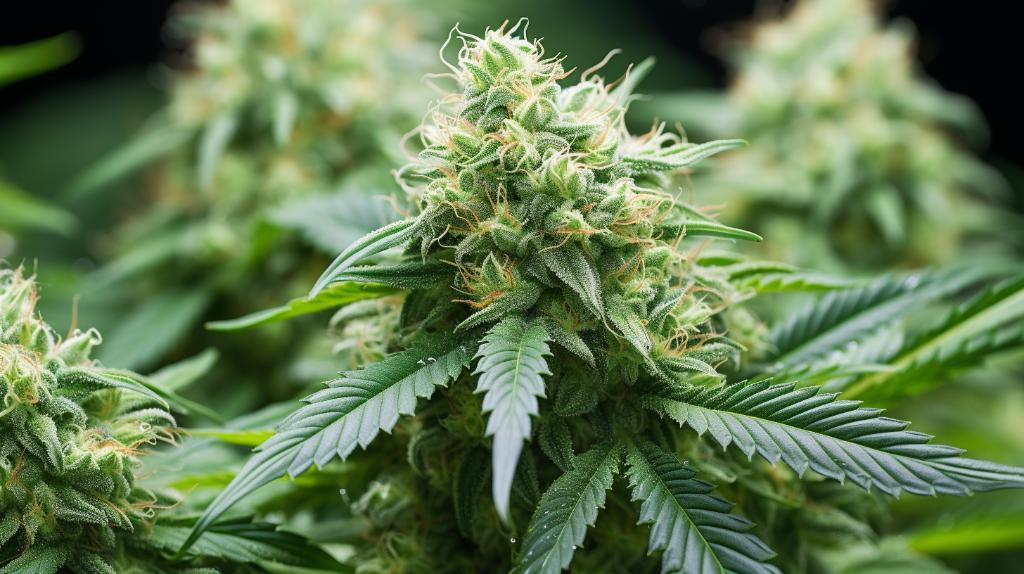
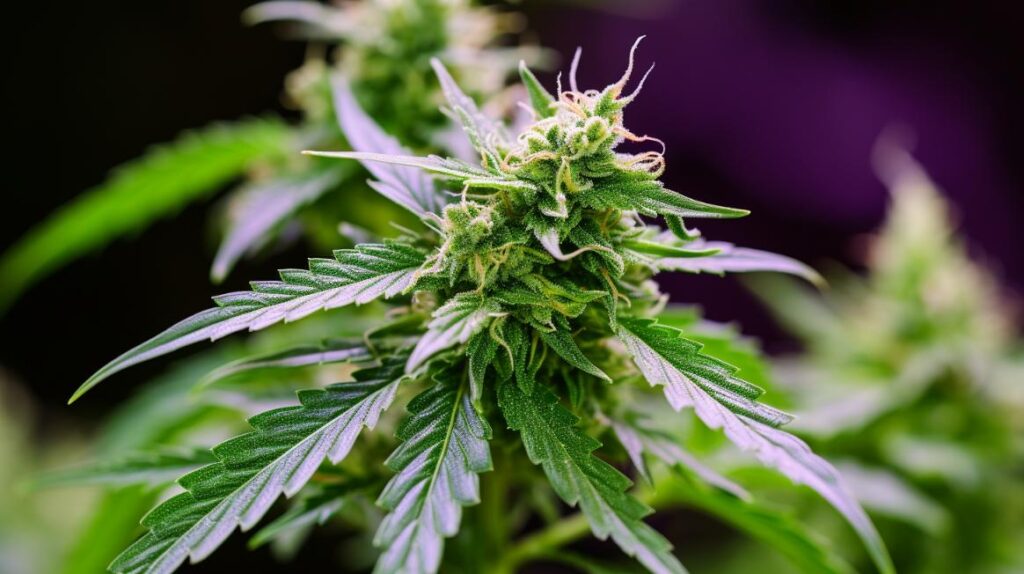
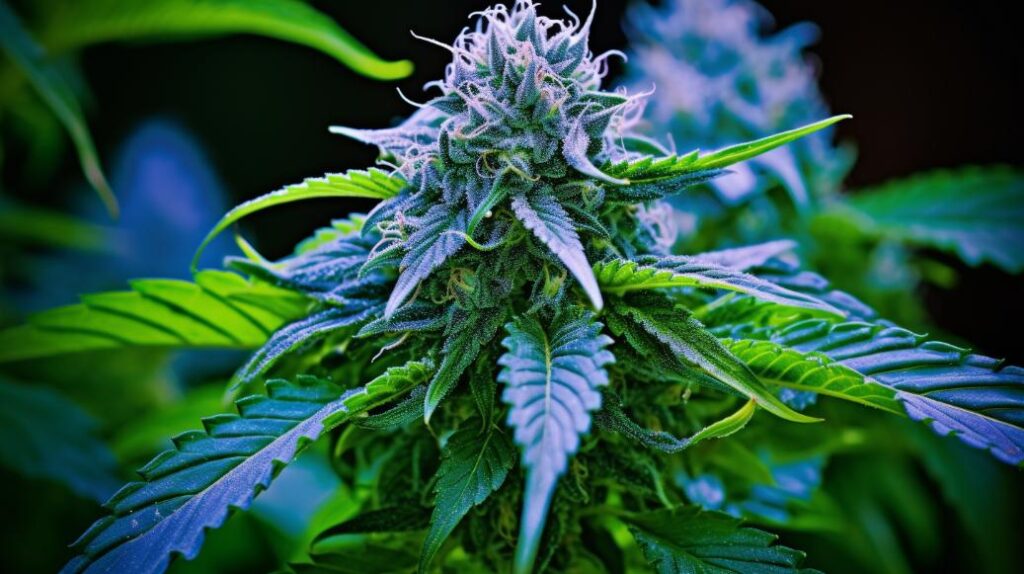
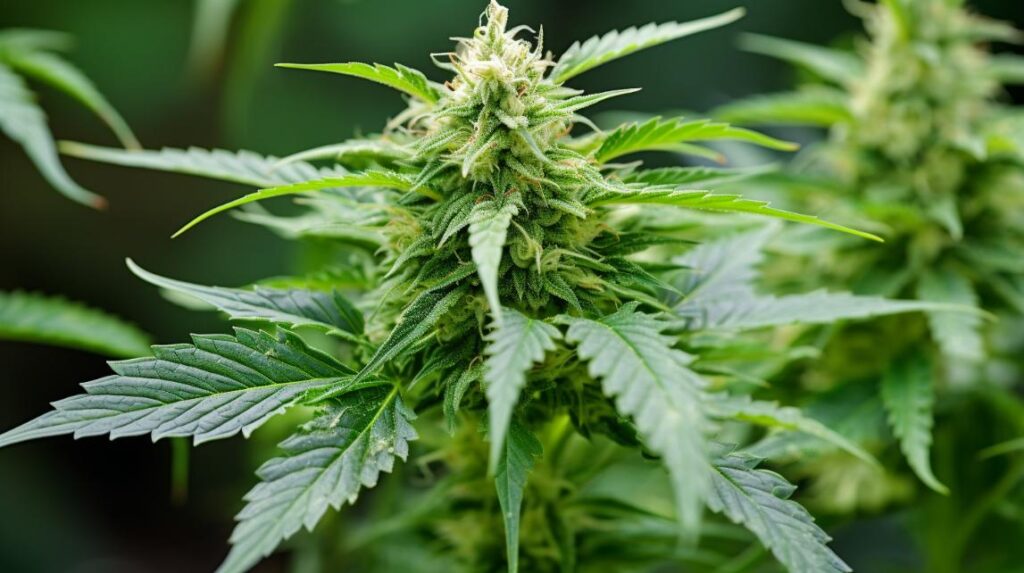
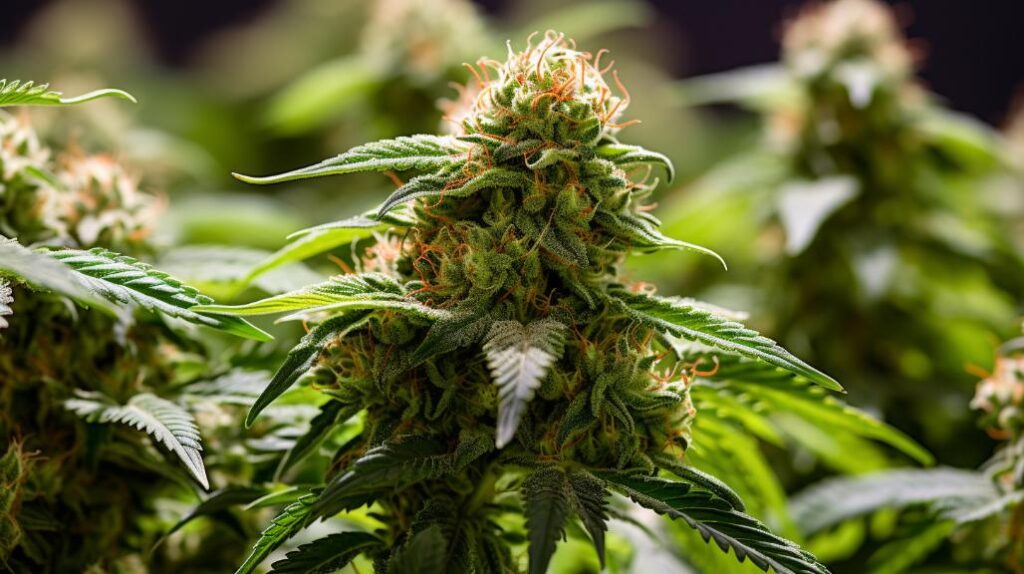

Responses